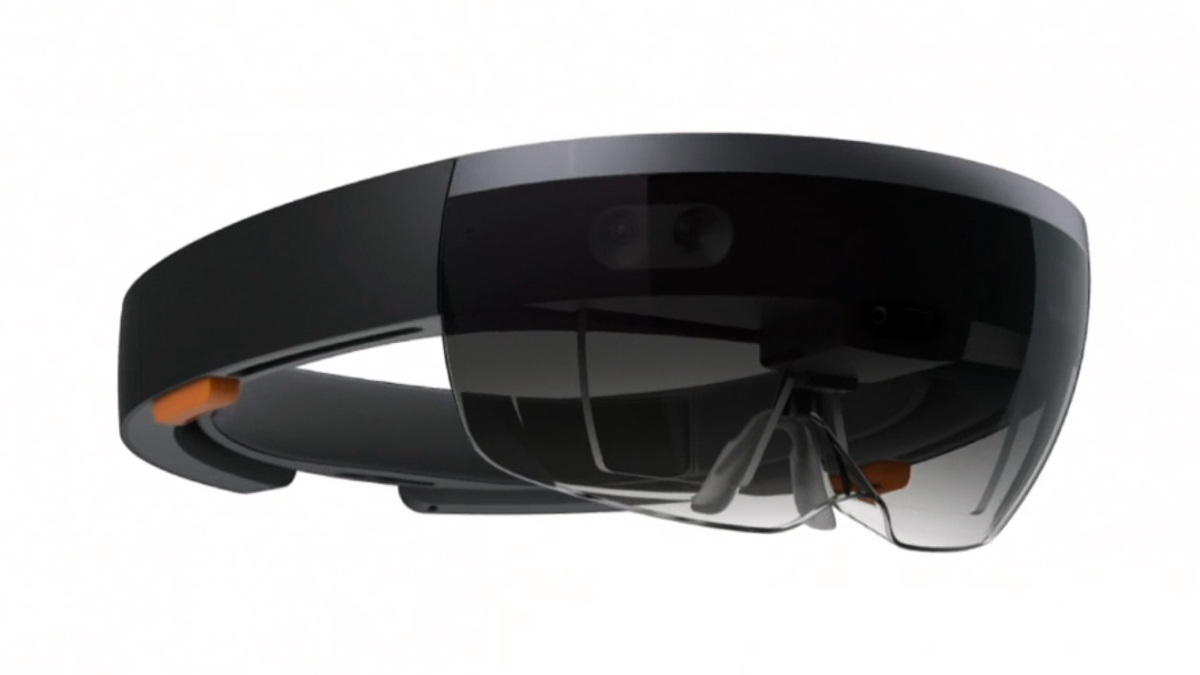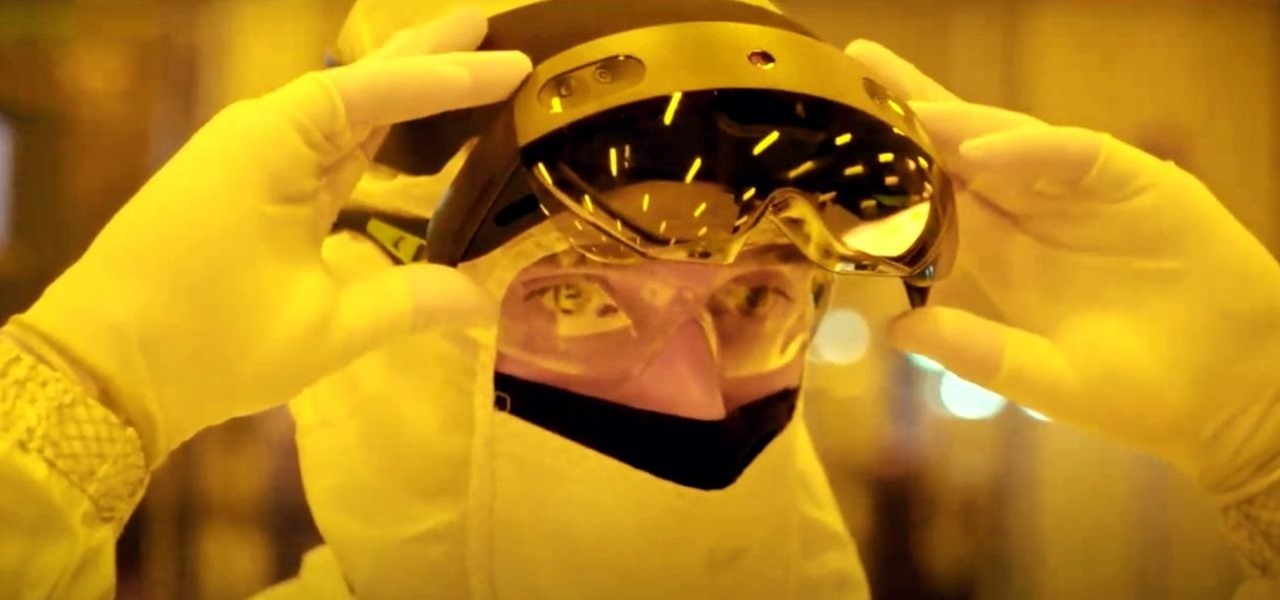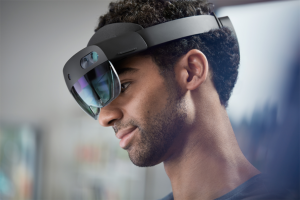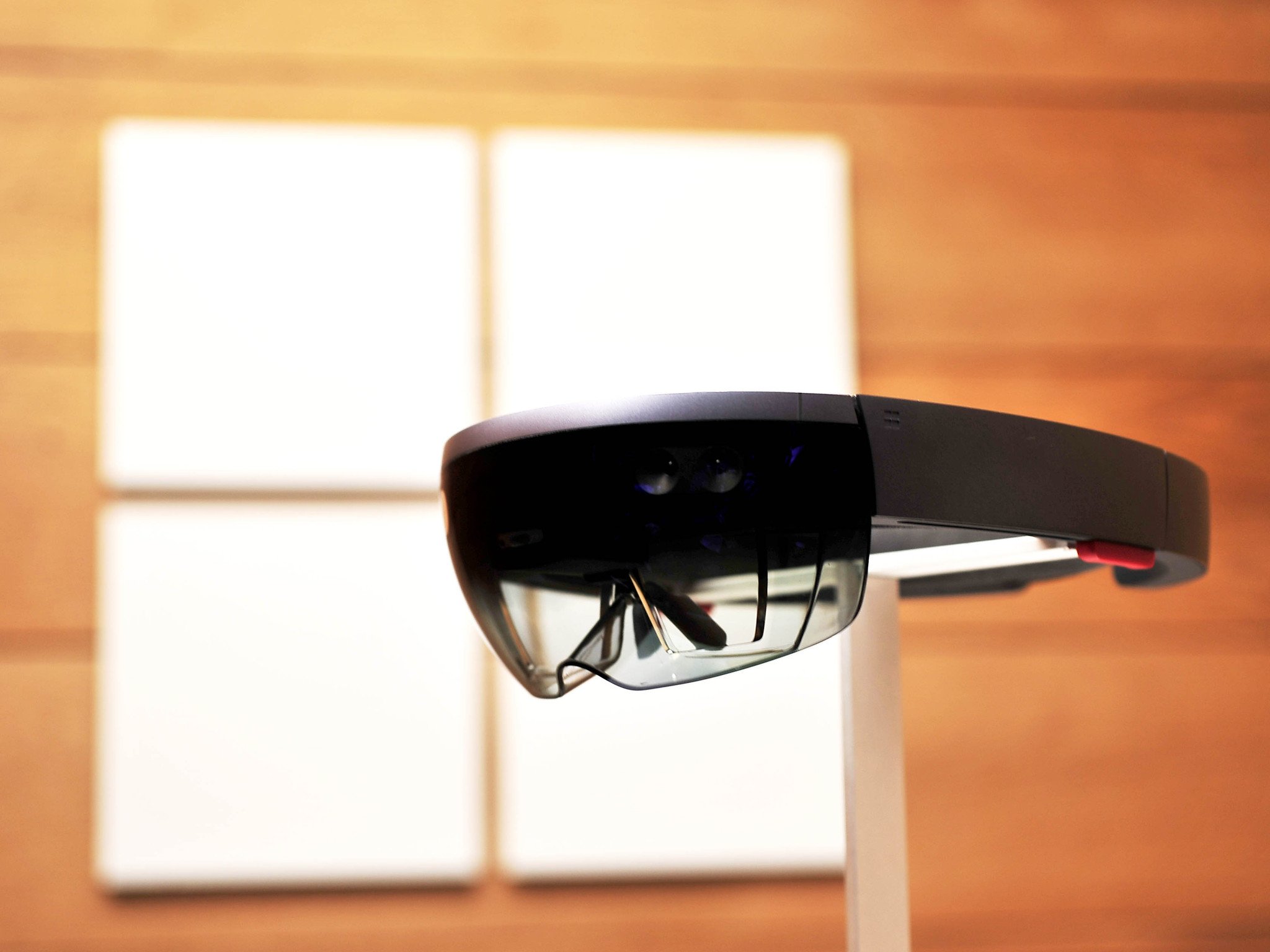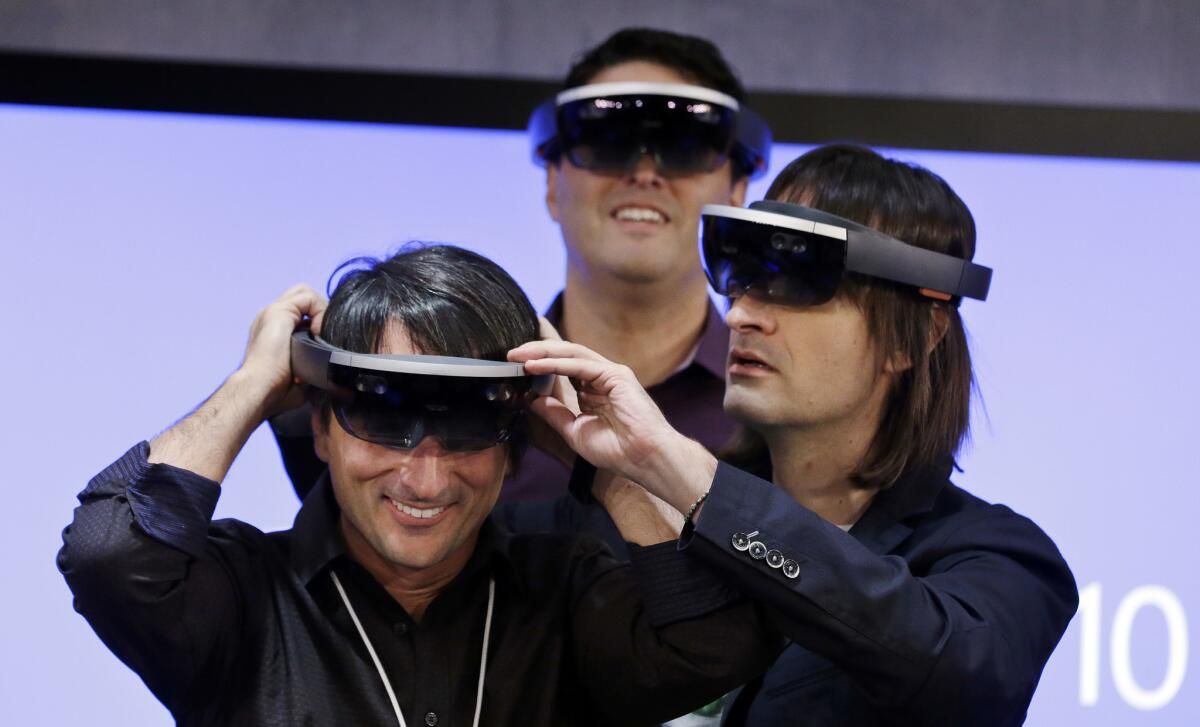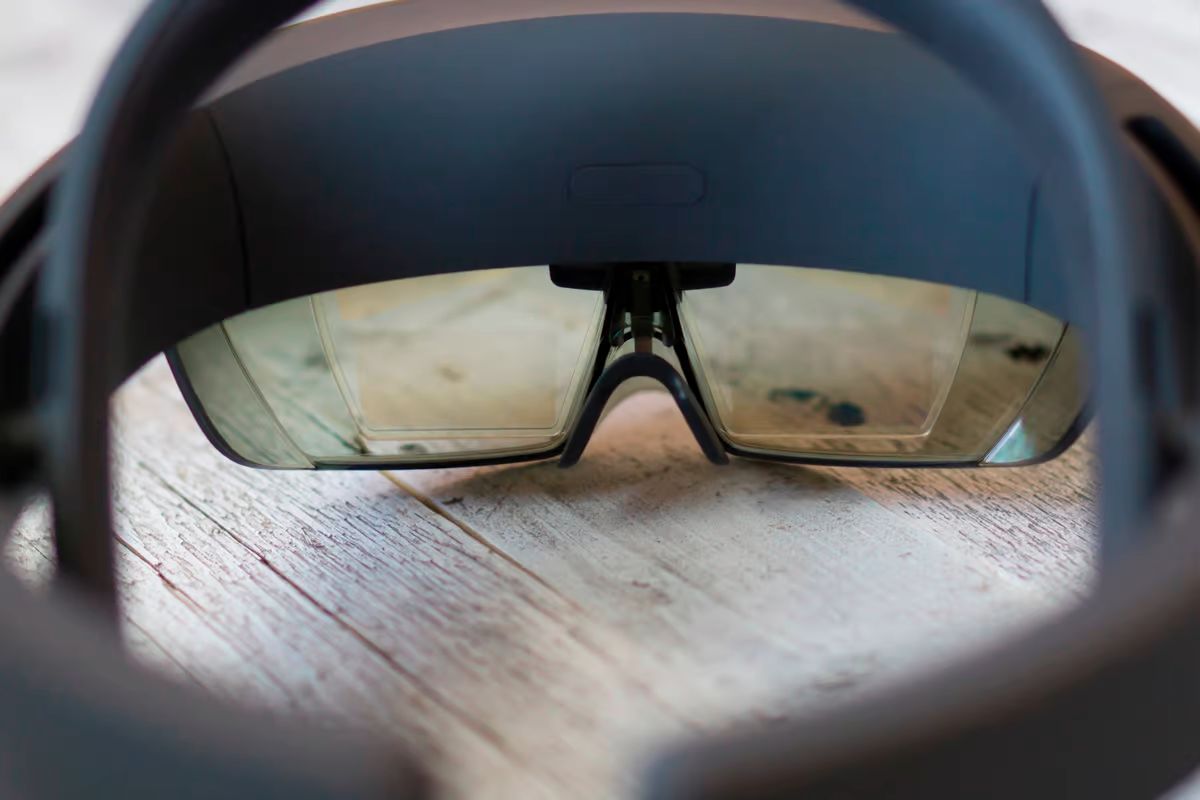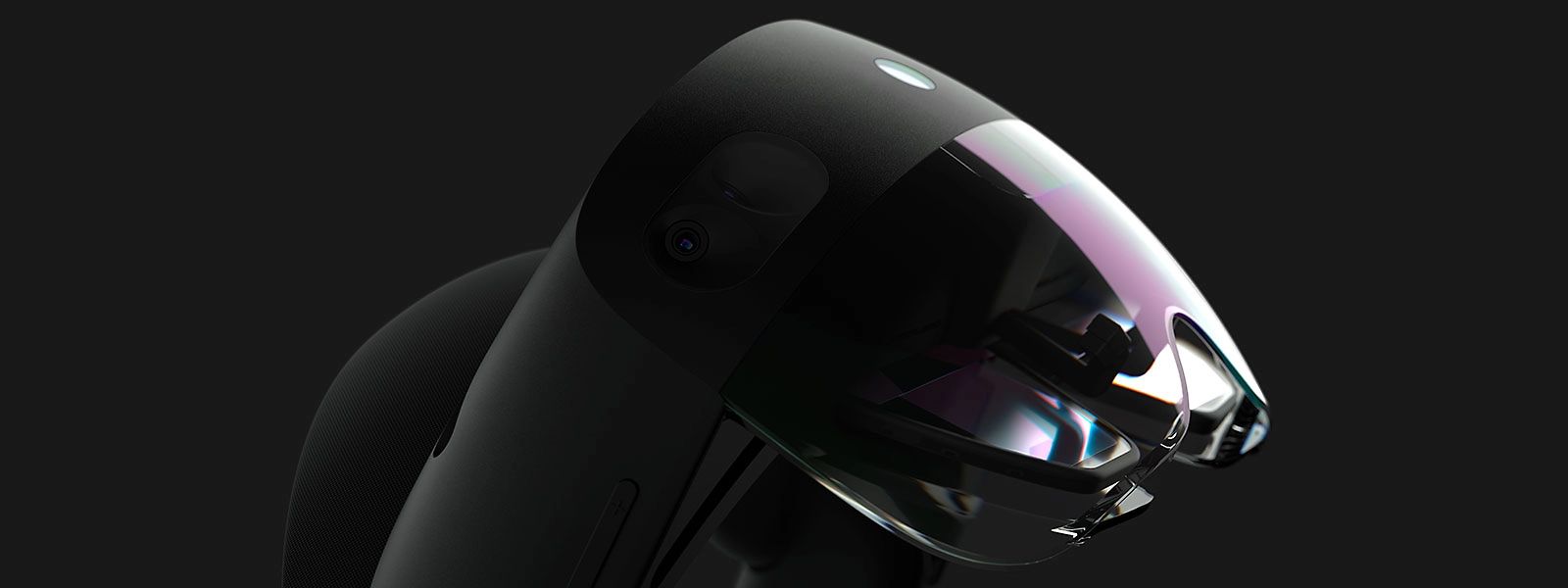Introduction
The Microsoft HoloLens is a groundbreaking augmented reality (AR) device that has revolutionized the way we interact with digital content. With its ability to overlay holographic images onto the real world, the HoloLens offers a wide range of applications, from gaming and entertainment to healthcare and engineering. But have you ever wondered what powers the magic behind this innovative gadget?
The processor is a critical component of any electronic device, and the Microsoft HoloLens is no exception. It plays a key role in executing instructions, processing data, and powering the device’s performance. In this article, we will explore the processor used in the Microsoft HoloLens and how it contributes to its immersive AR experience.
When it comes to the HoloLens, Microsoft has implemented a unique approach to processing holographic content. Instead of relying solely on a traditional CPU (central processing unit), they have developed a dedicated HPU (holographic processing unit) to handle the complex tasks involved in rendering holograms.
The HPU works in conjunction with an Intel Atom x86 processor, which handles general computing tasks and provides the underlying computational power. Together, these processors enable the HoloLens to deliver seamless and realistic holographic experiences. Let’s take a closer look at each of these processors and their roles in powering the Microsoft HoloLens.
What is Microsoft HoloLens?
The Microsoft HoloLens is a cutting-edge augmented reality (AR) device developed by Microsoft. Unlike traditional virtual reality (VR) headsets that transport users to entirely virtual environments, the HoloLens seamlessly blends digital holographic content with the real world. This immersive AR experience allows users to interact with and manipulate holograms in their physical surroundings.
The HoloLens consists of a head-mounted display unit equipped with multiple sensors, including cameras and depth sensors. These sensors enable the device to accurately track the user’s movements and the environment, ensuring that holograms are correctly placed and anchored in real-world objects.
One of the notable features of the HoloLens is its spatial sound technology, which delivers audio based on the user’s location and perspective. This enhances the immersion by providing realistic 3D sound, making the holograms feel even more lifelike.
The device also includes a built-in microphone, allowing users to interact with holograms through voice commands and natural language processing. This voice recognition feature enables intuitive navigation and control of the HoloLens, making it even more user-friendly.
With its advanced AR capabilities, the Microsoft HoloLens has gained popularity in various industries, including gaming, design and engineering, healthcare, education, and more. Game developers have embraced this technology to create mixed reality experiences, allowing users to interact with virtual characters and objects in their physical environment.
In the healthcare sector, the HoloLens has been utilized for medical training, surgical planning, and patient education. Physicians can visualize complex medical imaging data, such as CT scans and MRI images, in 3D and overlay them onto a patient’s body for precise diagnosis and treatment planning.
In the education field, the HoloLens enables interactive and immersive learning experiences. Students can explore historical landmarks, dissect virtual organisms, and participate in virtual experiments, enhancing their understanding of various subjects.
Overall, the Microsoft HoloLens is a cutting-edge AR device that has opened up a world of possibilities in terms of how we interact with digital content. Its seamless blending of the virtual and physical worlds has paved the way for new and exciting applications across various industries.
Importance of the Processor in HoloLens
The processor plays a crucial role in the performance and functionality of the Microsoft HoloLens. As an AR device, the HoloLens needs to process a massive amount of data in real-time and deliver seamless 3D holographic experiences to the user. This is where a powerful and efficient processor becomes essential.
One of the primary responsibilities of the processor in the HoloLens is to handle the calculations required for rendering and displaying holograms. This includes tasks such as tracking the user’s head movements, mapping holograms onto the real world, and adjusting the images based on the user’s perspective. These computations need to be executed quickly and accurately to ensure a smooth and immersive experience.
The processor is also responsible for processing various input data, such as visual information from the device’s cameras and depth sensors, as well as audio input from the microphone. It analyzes and interprets this data to understand the user’s environment, detect surfaces for hologram placement, and enable interactive functionalities.
An efficient processor is crucial for minimizing latency, which is the delay between the user’s actions and the device’s response. In an AR experience, any noticeable delay can break the immersion and hinder the user’s interaction with holograms. By having a powerful processor, the HoloLens can reduce latency and ensure that the holograms respond quickly and accurately to the user’s commands and gestures.
Furthermore, the processor in the HoloLens is responsible for managing power consumption. In a portable device like the HoloLens, it is important to balance performance with battery life. A well-optimized processor can ensure efficient power usage, maximizing the device’s uptime and usability without compromising its performance.
As technology advances and new applications for the HoloLens emerge, the processing demands will continue to increase. Therefore, having a capable processor that can handle complex calculations and deliver high-performance capabilities is crucial for ensuring the HoloLens remains at the forefront of augmented reality innovation.
Holographic Processing Unit (HPU)
In addition to the traditional processor, the Microsoft HoloLens employs a unique component known as the Holographic Processing Unit (HPU). The HPU is designed specifically to handle the complex tasks involved in rendering and displaying holographic content.
The HPU is responsible for accelerating the processing of holographic data, including spatial mapping, gesture recognition, and real-time information tracking. It offloads these intensive computations from the main processor, allowing for more efficient and seamless AR experiences.
One of the key functions of the HPU is spatial mapping, which involves understanding the user’s environment and creating a 3D representation of it. The HPU utilizes depth sensors and other built-in sensors to scan the surroundings and generate a detailed map that the HoloLens can use to anchor holograms in physical space.
The HPU also plays a critical role in gesture recognition and tracking. It can accurately detect and interpret the user’s hand movements and gestures, allowing for intuitive and natural interaction with holograms. This capability enables users to manipulate virtual objects, navigate menus, and perform various tasks using simple hand gestures.
Another important task that the HPU performs is real-time information tracking. It continuously analyzes data from the device’s sensors, such as its cameras and motion sensors, to determine the user’s position and orientation in the environment. This information is essential for maintaining accurate hologram placement and alignment, as well as providing a seamless augmented reality experience.
The HPU is a custom-built component specifically designed for the HoloLens, and it plays a critical role in delivering high-performance AR capabilities. By offloading complex holographic processing tasks to a dedicated unit, the HoloLens can provide users with immersive and responsive holographic experiences.
Additionally, Microsoft has made significant advancements in the HPU with the release of HPU 2.0. This updated version offers even more processing power and efficiency, enabling improved performance and reducing power consumption. With HPU 2.0, the HoloLens can handle more complex and detailed holograms, resulting in enhanced realism and interactivity.
In essence, the Holographic Processing Unit (HPU) is a specialized component within the Microsoft HoloLens that is dedicated to handling the demanding tasks involved in creating and rendering holographic content. Its role in accelerating computations, enabling gesture recognition, and facilitating real-time information tracking is vital in delivering seamless and immersive augmented reality experiences.
Intel Atom x86 Processor
In addition to the dedicated Holographic Processing Unit (HPU), the Microsoft HoloLens utilizes an Intel Atom x86 processor to handle general computing tasks and provide the underlying computational power.
The Intel Atom x86 processor is a low-power, high-performance chip designed specifically for mobile and embedded devices. It offers a balance between power efficiency and processing capabilities, making it well-suited for portable devices like the HoloLens.
The Atom x86 processor is based on the x86 architecture, which is commonly used in personal computers and laptops. This allows the HoloLens to run a version of the Windows operating system, providing a familiar environment for developers and users alike.
The processor plays a critical role in handling general computing tasks, such as running applications, managing memory, and processing user input. It ensures that the HoloLens can handle a wide range of applications and deliver a smooth and responsive user experience.
Furthermore, the Atom x86 processor is optimized for power efficiency, which is crucial for a portable device like the HoloLens. By minimizing power consumption, it helps extend the device’s battery life and allows users to enjoy longer AR experiences without frequent recharging.
The Intel Atom x86 processor also includes integrated graphics capabilities, which contribute to the HoloLens’s ability to render high-quality holographic images and videos. This enables realistic and immersive AR experiences that can be seamlessly integrated into the user’s surroundings.
While the HoloLens’s dedicated HPU handles the complex holographic processing tasks, the Intel Atom x86 processor ensures that the device remains versatile and capable of running a wide range of applications. Its power efficiency, compatibility with the Windows operating system, and integrated graphics capabilities make it a key component in delivering a high-performance augmented reality experience.
Overall, the Intel Atom x86 processor complements the Holographic Processing Unit (HPU) in the Microsoft HoloLens by providing the necessary computational power and versatility to handle general computing tasks. Together, these processors work in tandem to deliver a seamless and immersive AR experience to users.
Custom-built Holographic Processing Unit (HPU 2.0)
Building upon the success of the original HPU, Microsoft has developed a custom-built HPU 2.0 for the Microsoft HoloLens. This upgraded version of the HPU brings significant improvements in performance, efficiency, and capabilities.
The HPU 2.0 is a more powerful and efficient processor that enhances the HoloLens’s ability to deliver immersive augmented reality experiences. It is designed to handle even more complex holographic computations, enabling the device to render more detailed and realistic holograms.
One of the notable improvements in the HPU 2.0 is its increased processing power. It can perform calculations faster and more efficiently, resulting in improved responsiveness and reduced latency. This allows for smoother interactions with holograms and a more natural user experience.
In addition to enhanced performance, the HPU 2.0 also brings improvements in power efficiency. It is designed to optimize power usage, extending the HoloLens’s battery life. This is particularly important for users who engage in longer AR sessions without the need for frequent recharging.
Another significant advancement in the HPU 2.0 is its expanded capabilities. It now supports more advanced artificial intelligence and machine learning algorithms, enabling the HoloLens to better understand and interpret the user’s environment. This opens up new possibilities for augmented reality applications, such as advanced object recognition and interaction.
The HPU 2.0 also includes improved support for spatial sound processing. It enhances the HoloLens’s ability to deliver immersive audio experiences, providing realistic and spatially accurate sound based on the user’s location and perspective.
The HPU 2.0 represents Microsoft’s commitment to continuously pushing the boundaries of augmented reality technology. By developing a custom-built processor specifically optimized for the HoloLens, Microsoft aims to provide users with cutting-edge AR experiences that are unparalleled in performance and quality.
With the HoloLens and its HPU 2.0, Microsoft is paving the way for the future of augmented reality. The combination of advanced holographic processing and powerful computing capabilities opens up endless possibilities for industries such as gaming, education, healthcare, and more.
As Microsoft continues to evolve and refine the HoloLens platform, we can expect further advancements in the HPU technology, leading to even more immersive and realistic augmented reality experiences.
Comparing the Processors
Both the Holographic Processing Unit (HPU) and the Intel Atom x86 processor serve essential roles in powering the Microsoft HoloLens, but they differ in their functionalities and capabilities.
The HPU is a custom-built processor designed specifically for handling holographic processing tasks. It excels at tasks such as spatial mapping, gesture recognition, and real-time information tracking. By offloading these intensive computations from the main processor, the HPU ensures efficient and seamless augmented reality experiences.
On the other hand, the Intel Atom x86 processor is responsible for general computing tasks and provides the underlying computational power for the HoloLens. It runs a version of the Windows operating system and handles tasks such as running applications, managing memory, and processing user input. It provides the versatility and compatibility needed to run a wide range of applications on the HoloLens.
When it comes to power efficiency, both processors play a role. The HPU is designed to be highly power-efficient, optimizing energy consumption and maximizing the device’s battery life. The Intel Atom x86 processor also contributes to power efficiency through its low-power design, enhancing the overall performance and usability of the HoloLens.
In terms of performance, the HPU is specifically tailored for holographic processing and excels in executing complex computations quickly and accurately. It is optimized to render high-quality holograms and deliver immersive experiences. The Intel Atom x86 processor, while not dedicated solely to holographic processing, provides the necessary computational power to handle general computing tasks and support a wide range of applications on the HoloLens.
Both processors have undergone significant advancements. Microsoft has released HPU 2.0, an upgraded version of the HPU, which offers increased performance, efficiency, and expanded capabilities, including support for advanced artificial intelligence algorithms. The Intel Atom x86 processor has also seen improvements in power efficiency and performance with each generation.
When comparing the processors, it’s important to recognize that they work in conjunction with each other, complementing each other’s strengths to power the Microsoft HoloLens. The HPU specializes in handling holographic processing, while the Intel Atom x86 processor provides the general computing power and versatility needed for a wide range of applications and tasks.
Ultimately, the combination of the dedicated HPU and the Intel Atom x86 processor enables the HoloLens to deliver high-performance augmented reality experiences that are immersive, responsive, and versatile.
Conclusion
The Microsoft HoloLens is a remarkable augmented reality (AR) device that has transformed the way we interact with digital content. Its ability to seamlessly blend holographic images with the real world has opened up a new realm of possibilities in fields such as gaming, education, healthcare, and more.
Central to the HoloLens’s performance is its processors. The Holographic Processing Unit (HPU), designed specifically for holographic processing, plays a vital role in accelerating computations, enabling gesture recognition, and facilitating real-time information tracking. It ensures that the HoloLens delivers immersive and responsive AR experiences.
In conjunction with the HPU, the Intel Atom x86 processor provides the necessary power and versatility to handle general computing tasks on the HoloLens. It runs the Windows operating system, supports a wide range of applications, and ensures a smooth and responsive user experience.
With the advancements in technology, Microsoft has further improved the processors used in the HoloLens. The HPU 2.0 brings increased performance, efficiency, and expanded capabilities, including support for advanced artificial intelligence algorithms. The Intel Atom x86 processor has also seen enhancements in power efficiency and performance with each generation.
By combining the power of these processors, the HoloLens can deliver incredible AR experiences that are both immersive and versatile. Users can interact with holograms in their physical environment, providing endless possibilities for gaming, education, healthcare, and various other industries.
As technology continues to advance, we can expect further developments in the processors used in the HoloLens. These advancements will bring even more powerful performance, increased power efficiency, and expanded capabilities, further pushing the boundaries of augmented reality.
In conclusion, the processors in the Microsoft HoloLens, including the dedicated Holographic Processing Unit (HPU) and the Intel Atom x86 processor, work together to power the device and deliver seamless, immersive, and versatile augmented reality experiences. With their optimized performance, efficiency, and capabilities, these processors enable the HoloLens to remain at the forefront of AR innovation.







